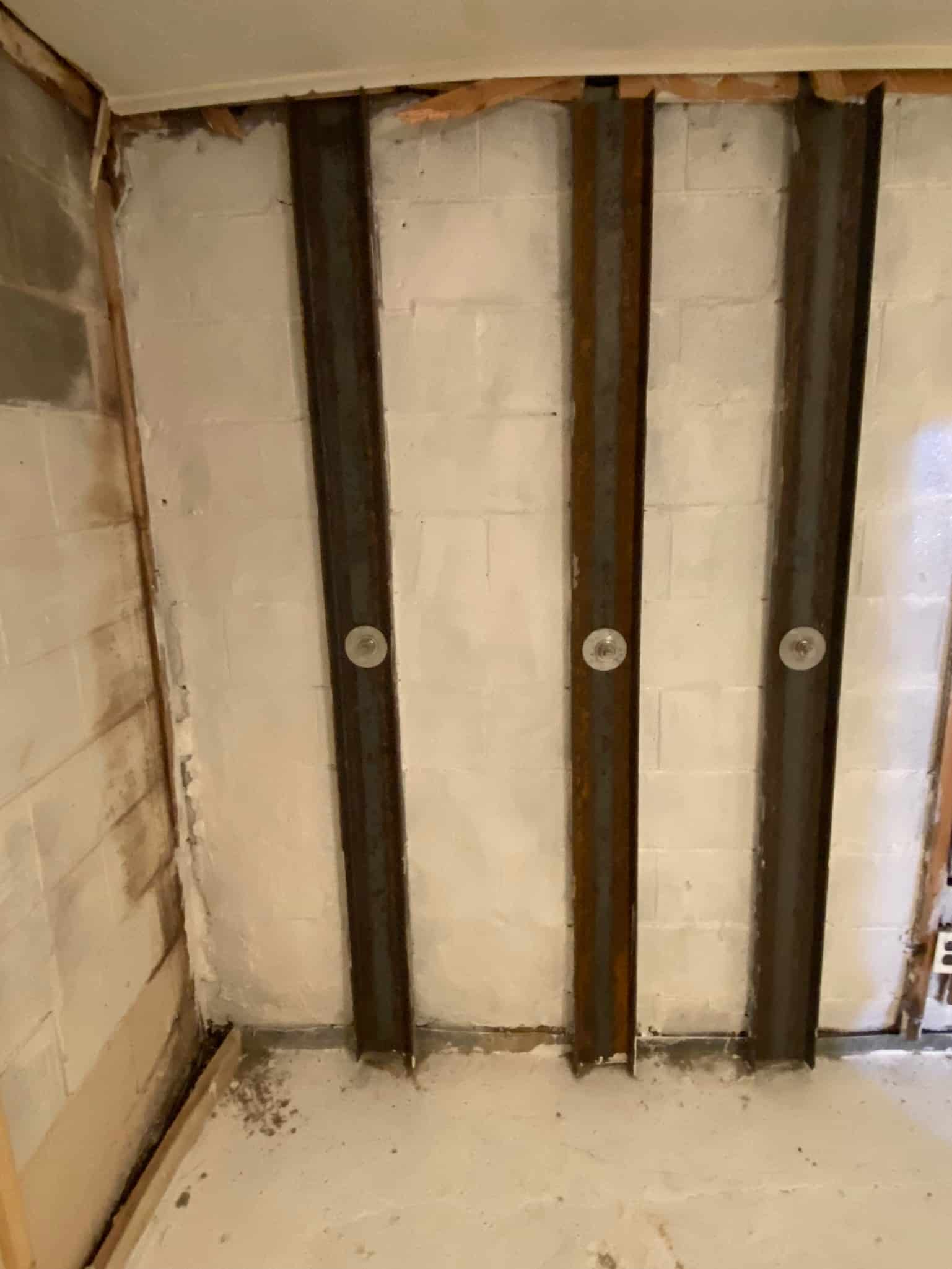
A small crack in your foundation may not seem like a big deal. Maybe it started as a thin hairline split, easily ignored or hidden behind furniture or landscaping. But what if that crack is growing—slowly but surely—month after month? The truth is, foundation cracks rarely stay the same size. Left unaddressed, they can widen and deepen, threatening your home’s structural integrity and leading to costly repairs.
Understanding why cracks widen over time is crucial for any homeowner. From soil movement to seasonal weather changes and moisture variations, multiple factors work together to turn a minor blemish into a major structural problem. In this article, we’ll explore the science behind progressive foundation damage, the warning signs to look out for, and the professional solutions that can stop cracks in their tracks.
🔑 Key Takeaways
- Small cracks often widen due to ongoing soil movement, hydrostatic pressure, and seasonal cycles.
- Progressive widening is a sign of active foundation settlement or structural stress.
- Ignoring widening cracks can lead to serious structural issues and water infiltration.
- Effective repair solutions include epoxy injections, carbon fiber reinforcements, pier systems, and improved drainage.
- Early professional assessment is essential to prevent extensive and expensive future damage.
How Do Foundation Cracks Start?
Cracks in foundation walls and slabs can form for many reasons. The most common causes include:
1. Concrete Shrinkage
When concrete cures, it naturally loses moisture and shrinks slightly. Small hairline cracks (usually vertical) are common shortly after construction and may not indicate a structural problem—at first.
2. Soil Settlement
As soil beneath a foundation compresses or erodes, sections of the foundation can sink unevenly, causing stress and cracking. This process is gradual but ongoing.
3. Hydrostatic Pressure
Water buildup in the soil around your foundation exerts lateral force on walls, pushing them inward and leading to horizontal or diagonal cracks.
4. Temperature Changes
Concrete expands in heat and contracts in cold. Seasonal temperature swings cause repeated expansion and contraction cycles, eventually leading to cracking.
5. Poor Construction or Materials
Substandard workmanship or low-quality concrete mix can leave a foundation more vulnerable to cracking under stress.
Why Do Cracks Widen Over Time?
A small foundation crack can worsen for several reasons, especially when the underlying problem is left unresolved. Let’s break down the main contributors:
Ongoing Soil Movement
Foundation walls rest on soil, which is rarely completely stable. Different types of soil respond differently to moisture:
| Soil Type | Behavior | Effect on Foundation |
|---|---|---|
| Clay | Expands when wet, shrinks when dry | Causes shifting and uneven support |
| Sand | Prone to washing away | Leads to voids and sinking |
| Silt | Easily compacted | Reduces support strength |
When soil expands or contracts, it puts stress on the foundation, forcing small cracks to open wider and deeper over time.
Water Pressure and Poor Drainage
When water is not properly diverted away from your home, it accumulates around the foundation, increasing hydrostatic pressure. This pressure pushes against the walls, worsening existing cracks and creating new ones.
Seasonal Weather Cycles
During rainy seasons, soil absorbs water and expands. In dry seasons, it contracts. In colder regions, freeze-thaw cycles intensify this movement as water in the soil freezes and expands, then thaws and contracts repeatedly. These cycles create ongoing stress that slowly pries cracks open wider each year.
Structural Load Changes
Renovations, additions, or even heavy landscaping near your home can alter the load distribution on the foundation. If the foundation isn’t designed or reinforced to handle these changes, pre-existing cracks can quickly worsen.
Warning Signs of Worsening Cracks
Cracks that widen are a clear warning sign, but other symptoms can also indicate deeper foundation issues:
- Cracks extending from windows and door frames
- Gaps forming between walls and floors or ceilings
- Uneven or sloping floors
- Doors and windows sticking or not latching properly
- Moisture seepage through basement walls or floors
- Cracks in exterior brickwork or siding
If you notice these issues together with widening cracks, it’s a strong indication that the foundation is moving and needs immediate professional attention.
The Risks of Ignoring Widening Cracks
Ignoring a widening crack doesn’t make it disappear—it only gives it more time to grow. Here’s what can happen if cracks are left untreated:
Structural Damage
A crack that widens compromises the strength of the wall or slab. Over time, this can lead to severe foundation settlement, bowing basement walls, and in extreme cases, partial collapse.
Water Infiltration
Cracks act as entry points for water. Moisture can lead to basement flooding, mold growth, and deterioration of concrete and steel reinforcements inside the walls.
Increased Repair Costs
The larger and deeper a crack becomes, the more complex—and expensive—the repair. What might have been a simple epoxy injection can escalate to full-scale piering or wall anchoring.
Reduced Property Value
Visible foundation damage significantly lowers a home’s resale value and can scare off potential buyers during inspections.
Professional Solutions for Widening Cracks
Foundation cracks require tailored solutions depending on the crack type, cause, and extent of movement.
1. Epoxy or Polyurethane Injection
- Best for: Non-structural, stable cracks without active movement.
- Process: Cracks are sealed internally using high-strength adhesives that bond the concrete back together and prevent water infiltration.
2. Carbon Fiber Reinforcement
- Best for: Cracks in walls experiencing mild to moderate lateral pressure.
- Process: Carbon fiber straps are bonded vertically to the wall to prevent further movement and distribute stress evenly.
3. Pier Systems (Helical or Push Piers)
- Best for: Cracks caused by settlement or significant vertical movement.
- Process: Piers are driven deep into stable soil layers to support and potentially lift the foundation, stopping further cracking.
4. Wall Anchors
- Best for: Bowing or inward-moving basement walls.
- Process: Steel anchors are installed to stabilize and straighten walls, preventing crack progression.
5. Exterior Waterproofing and Drainage Solutions
- Best for: Cracks caused by water pressure or poor drainage.
- Process: Excavating around the foundation, applying waterproof membranes, and installing drainage systems to divert water away from the home.
Prevention: Keeping Cracks from Coming Back
After repairs, preventing future crack widening is essential. Here are proactive steps homeowners can take:
- Maintain gutters and downspouts; ensure they direct water at least 10 feet away.
- Regrade landscaping so soil slopes away from the foundation.
- Install or maintain French drains and sump pump systems.
- Avoid overwatering plants and trees near the foundation.
- Schedule regular foundation inspections, especially after severe weather.
Real-Life Case: A Crack That Couldn’t Be Ignored
A homeowner in Roanoke, VA, noticed a small hairline crack in his basement wall one summer. Thinking it was harmless, he ignored it. Over the next two years, the crack widened to nearly half an inch, and water began seeping into the basement every time it rained.
When he finally called Seal-Tite, a detailed inspection revealed that poor yard drainage had caused excessive soil movement. The solution included carbon fiber reinforcement to stabilize the wall, epoxy injection to seal the crack, and exterior grading correction to improve drainage.
The earlier intervention would have saved him thousands—but at least the foundation was stabilized before further structural compromise occurred.
FAQs: Widening Foundation Cracks
Can I patch widening cracks myself?
Surface-level patching doesn’t address the root cause and can fail quickly. Professional evaluation and repair are crucial.
How can I tell if a crack is getting worse?
Measure and document the width of cracks every few months. Widening or lengthening indicates active movement and requires professional attention.
Will insurance cover foundation crack repairs?
Most homeowners insurance policies do not cover foundation damage from soil movement or water pressure. Always check your policy for specifics.
Are carbon fiber straps visible after installation?
No. They can be painted over and are low-profile, making them nearly invisible inside finished basements.
How much does it cost to repair a widening crack?
Costs vary widely depending on repair type—from $500 for simple injections to $10,000+ for structural stabilization. Early repair keeps costs lower.
Conclusion: Don’t Wait—Act on Cracks Early
A small foundation crack today can become tomorrow’s structural nightmare if left unattended. Understanding why cracks widen over time and addressing the underlying causes quickly is the best way to protect your home.
From epoxy injections to pier systems, modern foundation repair solutions stop cracks from expanding and restore stability to your structure. Prevention steps, like proper drainage and regular inspections, ensure these cracks don’t return.
If you notice a crack getting bigger, don’t wait. Contact a trusted foundation repair specialist like Seal-Tite Basement Waterproofing. With the right expertise, you can protect your investment, preserve your home’s value, and keep your family safe.

Seal-tite Basement Waterproofing Co. is a full service basement environment contractor. We carry an A+ Better Business Bureau rating. We repaired over 40,000 homes and structures in Virginia, West Virginia, Tennessee, and North Carolina. We are fully insured and licensed. We have worked in all types of locations, including residential and commercial locations, government agencies, colleges, hospitals, churches, and condo associations.
Seal-tite® offers a lifetime transferable warranty. We carry a Class A Contractor’s License and we are fully insured. Our satisfied customers range from government agencies to businesses, hospitals, colleges, churches, and thousands of homeowners. Your home is probably the single largest investment you will make in your lifetime. Don’t wait, call Seal-tite® to help make your home dry, safe and livable.

